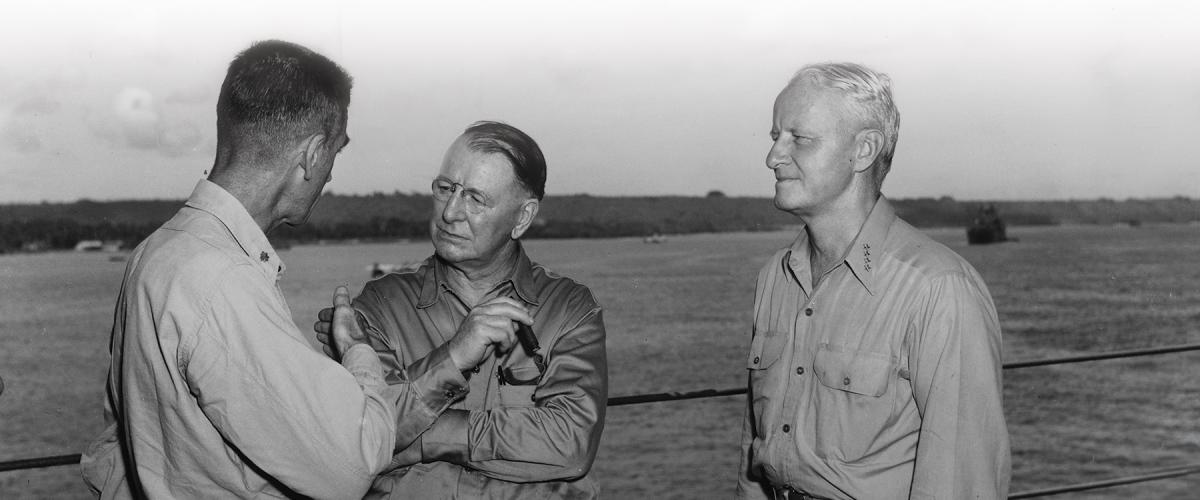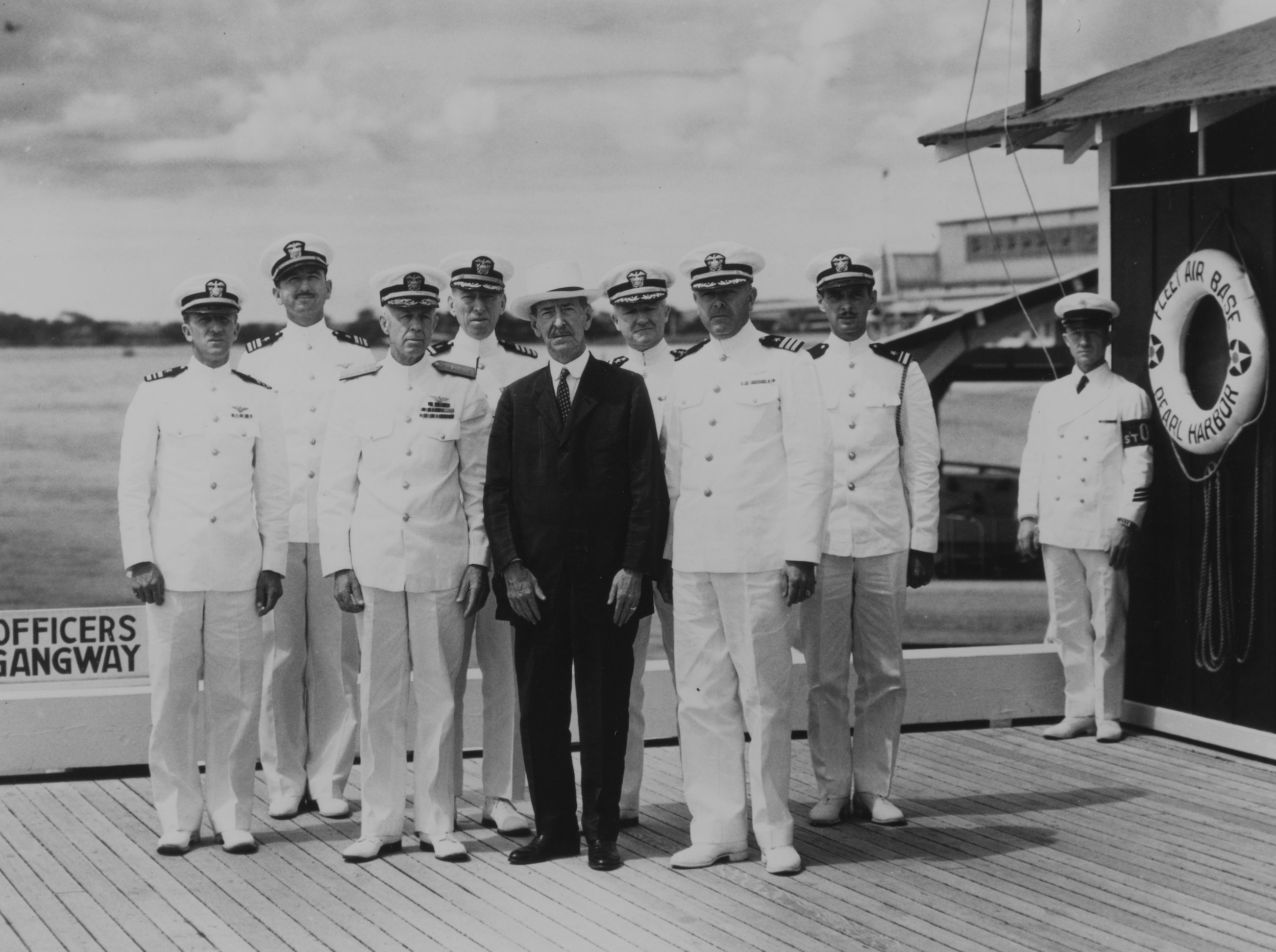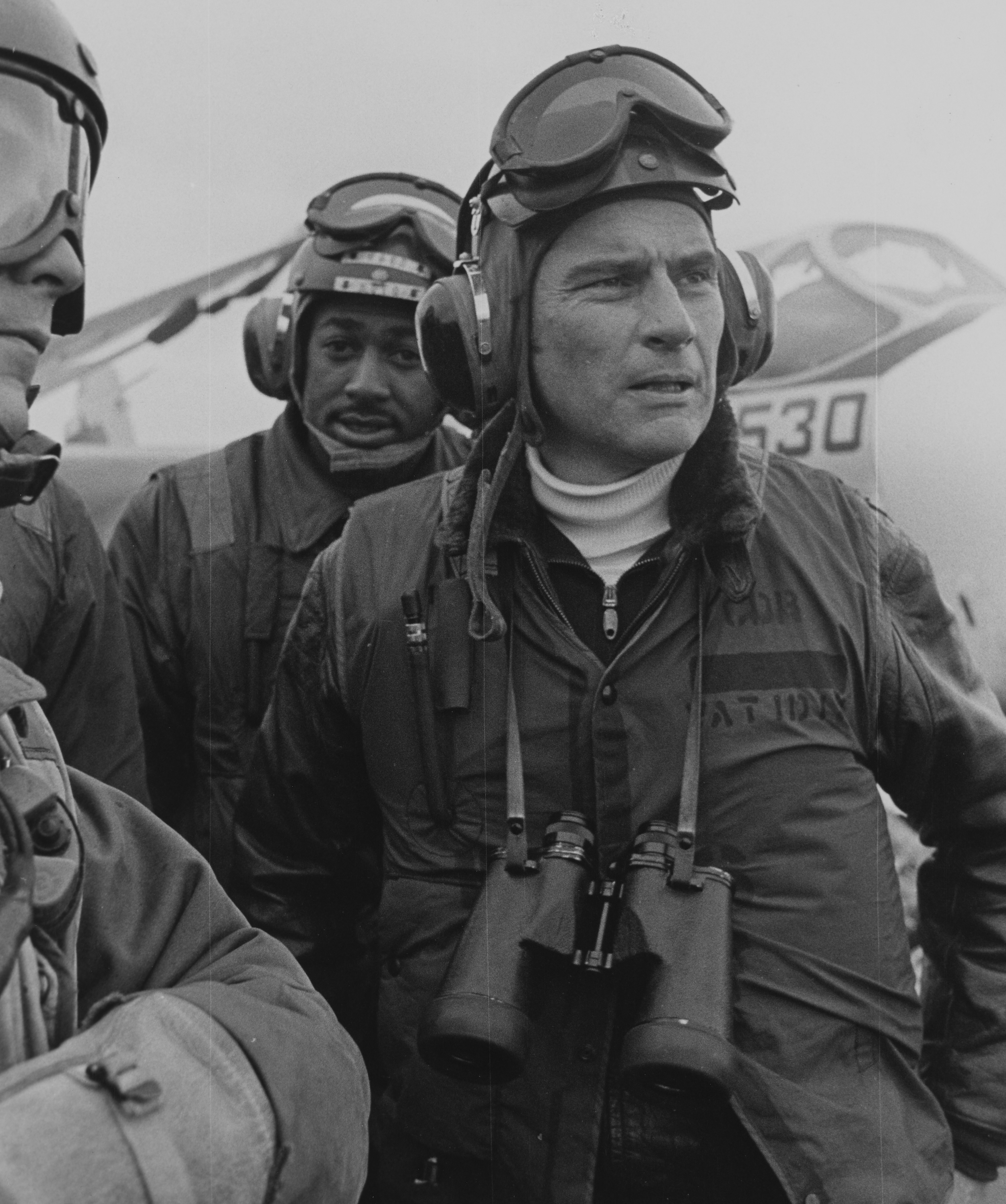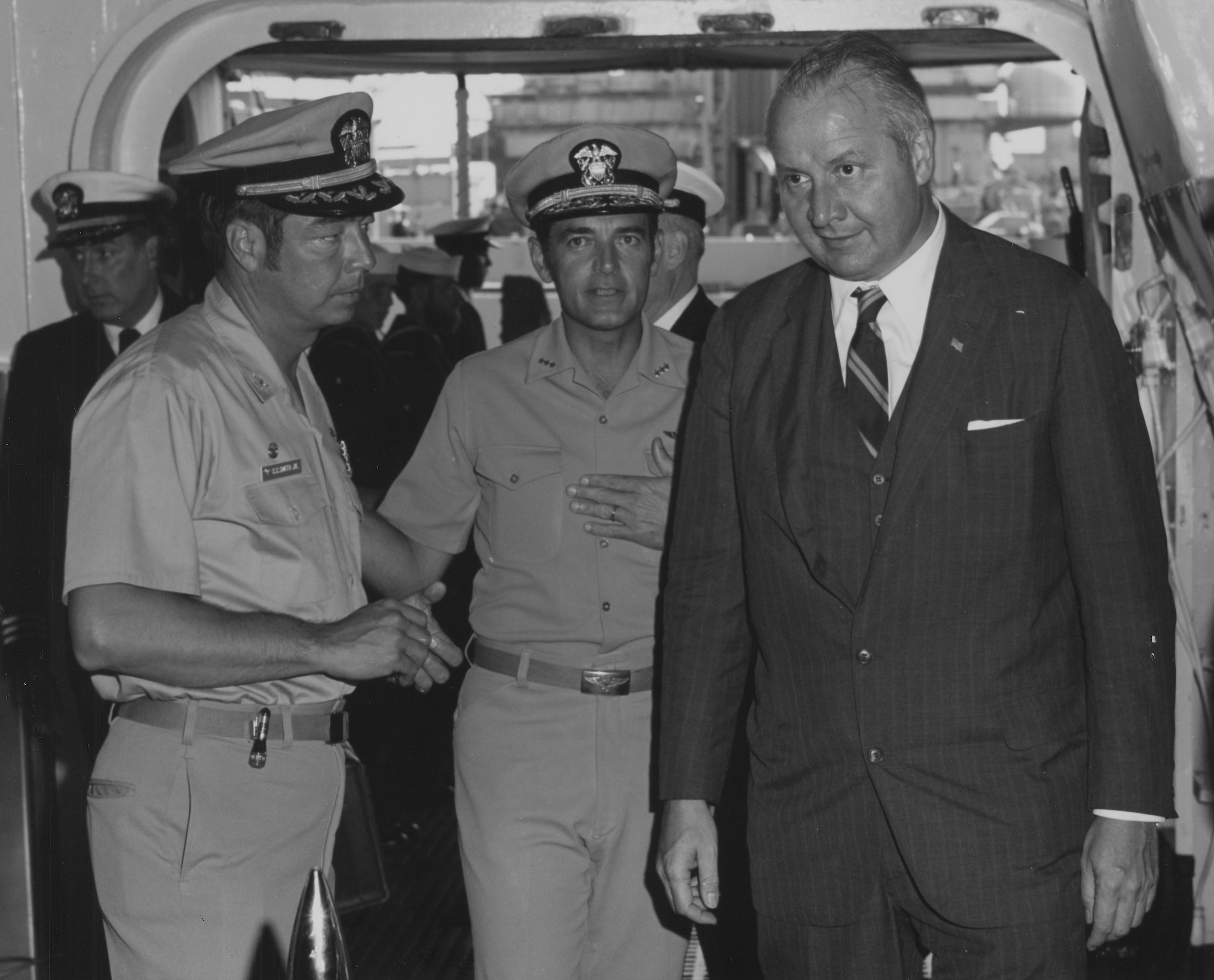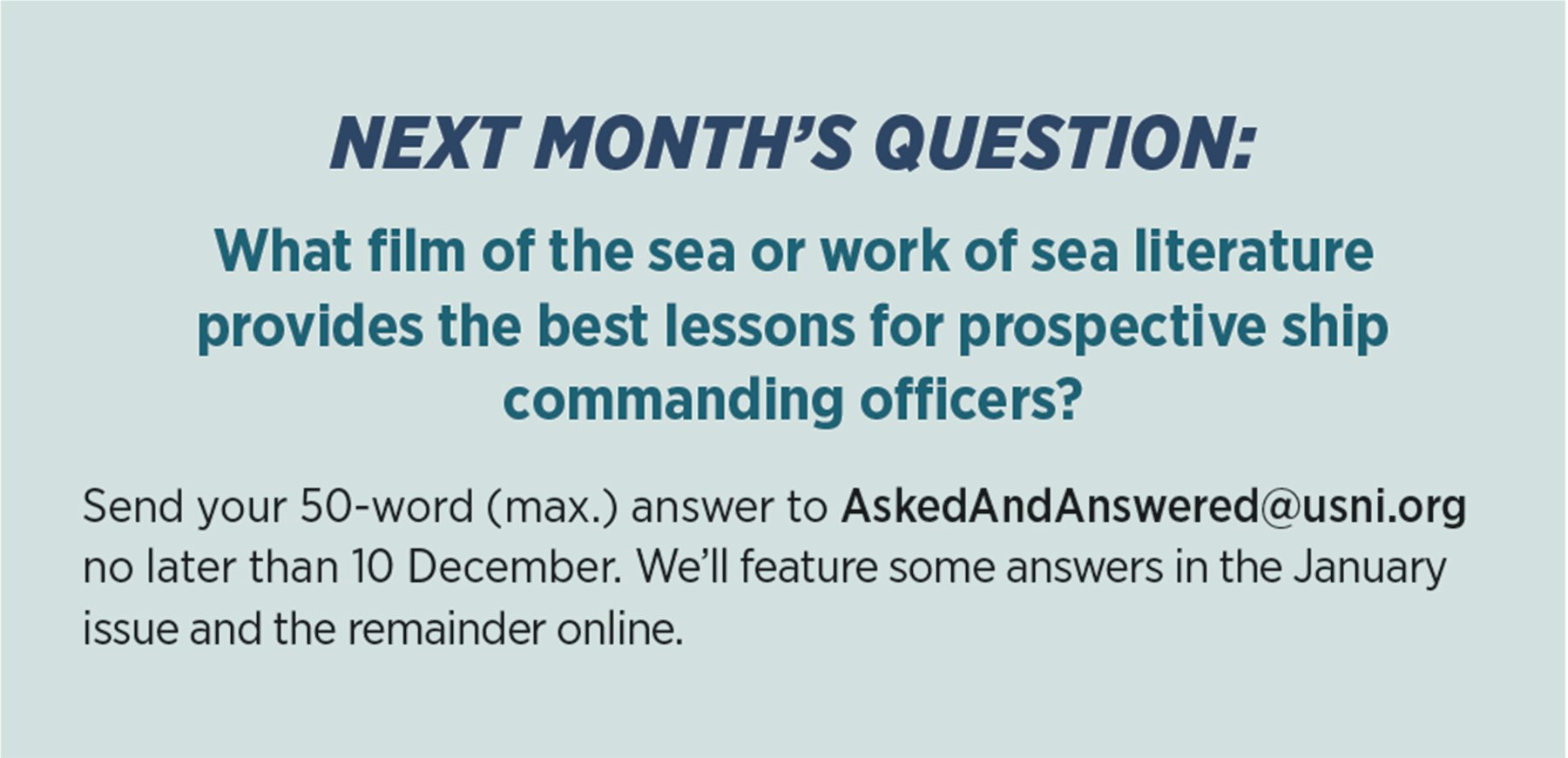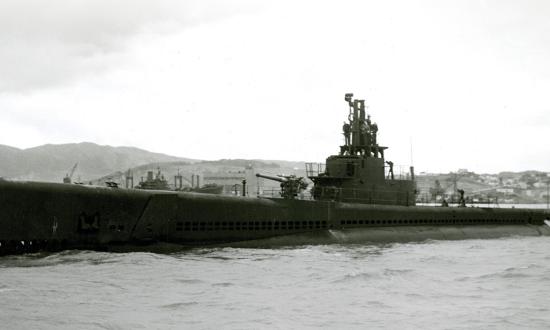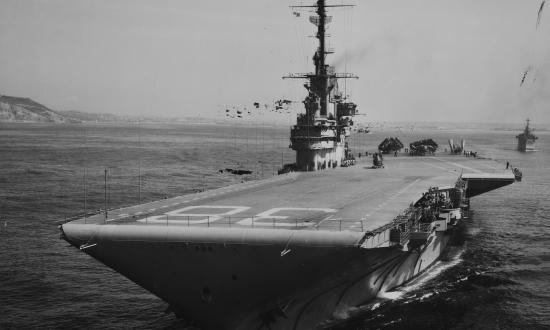Commander Bruce Castleman, U.S. Navy (Retired)
Secretary of the Navy Samuel L. Southard (1823–29). Only from 1820 was it clear the United States would maintain a standing Navy. Southard oversaw the Navy’s expansion and establishment of shore-based infrastructure. He also asserted civilian control over the officer corps, most notably in his handling of War of 1812 hero David Porter after the Fajardo Affair.
Edward J. Marolda
As Secretary of the Navy from 1981 to 1987, John F. Lehman was key to the creation of the 600-ship Navy, the 1986 Maritime Strategy, and the professionally trained, technologically advanced naval service that helped the United States win the Cold War.
Andrew K. Blackley
As Secretary of the Navy from 1933 to 1939, Claude A. Swanson, under President Franklin D. Roosevelt, worked with Representative Carl Vinson (D-GA) to build the ships allowed under the London Naval Treaty and the crucial prewar building program of the 1938 Naval Act. Swanson ensured the Navy was prepared for world war.
Secretary of the Navy Claude A. Swanson inspects Fleet Air Base, Pearl Harbor, Hawaii, with Navy officers in October 1933. U.S. Naval Institute Photo Archive
Lieutenant Commander Devereux Smith, U.S. Navy
Confirmed prior to Congress passing the Two-Ocean Navy Act, Secretary of the Navy Frank Knox (1940–44) transformed the Navy–Marine Corps team into the most powerful maritime fighting force in history. He built, manned, and trained the force that won World War II in the Pacific.
Lieutenant Commander Scott A. Wallace, U.S. Navy
John Warner (1972–74), who served with Admiral Elmo Zumwalt, one of the Navy’s most transformational Chiefs of Naval Operations. Warner signed the 1972 Incidents at Sea Agreement with the Soviet Union.
Secretary of the Navy John Warner on the flight deck of the USS John F. Kennedy (CVA-67) in September 1972. U.S. Naval Institute Photo Archive
Michael Koshel
President Abraham Lincoln’s Secretary of the Navy Gideon Welles (1861–69) took on a service in disarray after Fort Sumter was attacked in 1861. He rebuilt the Navy, introduced ironclads, and was the architect of a blockade against the Confederacy that was instrumental in the Union’s victory.
Captain John Odegaard, U.S. Navy (Retired)
J. William Middendorf II, Secretary of the Navy from April 1974 to January 1977. He convinced the administration to increase the Navy budget by 60 percent, while the Army and Air Force budgets remained flat. He secured funding for the Ohio-class ballistic-missile submarine, Trident submarine-launched ballistic missile, Aegis combat system, and F/A-18 Hornet.
Secretary of the Navy J. William Middendorf II on board the USS Enterprise (CVAN-65) in August 1974. U.S. Naval Institute Photo Archive
Chief Petty Officer Allan J. Miller, U.S. Navy (Retired)
The U.S. Navy under Secretary John Lehman (1981–87), with the blessing of President Ronald Reagan, made the most progress toward a 600-ship Navy. This effort outpaced the Soviet war machine and eventually put the Soviet Union out of business.
Captain John J. Palmieri, U.S. Navy (Retired)
Gideon Welles, President Abraham Lincoln’s Secretary of the Navy. A strong administrator, starting with only a handful of steam vessels and experiencing the resignation or removal of one-third of the officer corps, he led the development and deployment of the world’s largest most modern fleet of 671 vessels, 70 percent steam powered.
Senior Chief Petty Officer Paul H. Sayles, U.S. Navy (Retired)
Gideon Welles because of his leadership of the Civil War Union Navy. He ensured the Navy’s ability to participate in the Anaconda Plan through increased manning and warship numbers.
Brian Ewing, U.S. Navy Veteran
Theodore Roosevelt was Assistant Secretary of the Navy when he ordered Admiral George Dewey to attack the Spanish fleet in the Philippines at the outset of the Spanish-American War. Decisive victory in that war allowed the United States to have a base in the Philippines for most of the 20th century.
Duane Rice-Mason
Theodore Roosevelt was Assistant Secretary of the Navy, but it is he who first put the U.S. Navy on a path to world power status when he ordered the Asiatic Fleet to Hong Kong to prepare to attack the Spanish in the Philippines.



